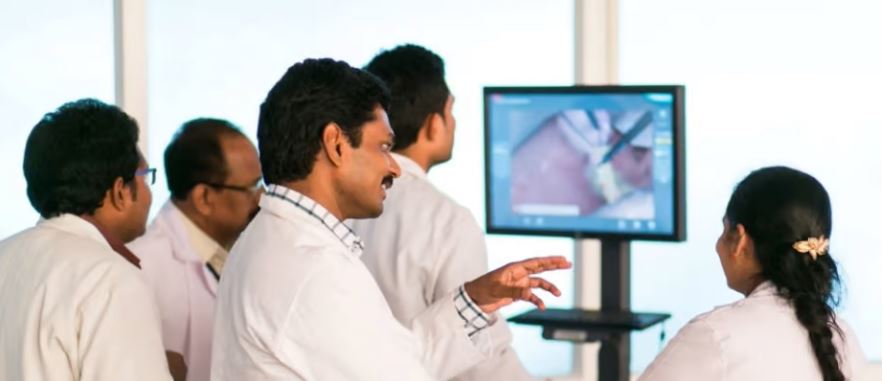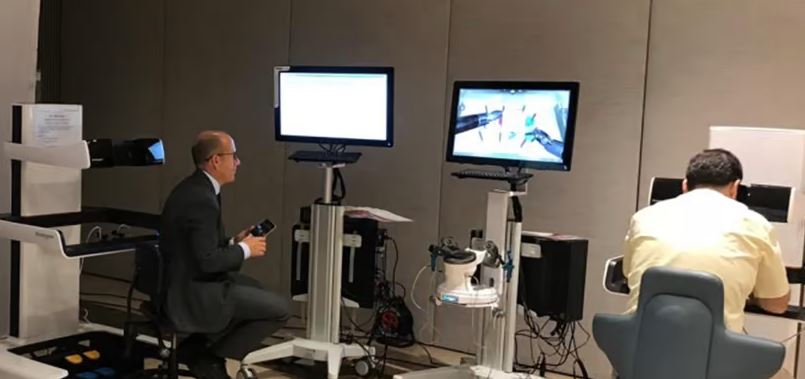Technology Category
- Platform as a Service (PaaS) - Application Development Platforms
- Sensors - Dimension & Displacement Sensors
Applicable Industries
- Cement
- Education
Applicable Functions
- Logistics & Transportation
Use Cases
- Continuous Emission Monitoring Systems
- Supply Chain Visibility
About The Customer
New Relic is a global company that empowers engineers with a data-driven approach to creating software, enabling them to build better digital experiences. The company serves tens of thousands of engaged customers and is the most widely used observability platform in the world. Founded in 2008, New Relic went public in 2014 and now has over 2,300 employees across the globe. The company recently announced a net zero 2030 goal and publicly committed to set a near-term Science-Based Target.
The Challenge
New Relic, a leading observability platform, was at the beginning of its climate journey two years ago. The company was keen to understand its carbon footprint, a priority at the Board and executive level, due to increasing interest from stakeholders, investors, and employees. However, the company lacked the direct experience to tackle this challenge. New Relic needed a partner to help fast track a data-driven climate plan. The company wanted to measure its carbon footprint, which was critical to any future action, and desired a hands-on approach. New Relic was looking for a platform that provided access to dashboards and insights about its emissions throughout the year, rather than a one-time annual snapshot.
The Solution
New Relic partnered with Watershed, a platform that provided the company with a view into its footprint data, allowing it to understand and investigate its emissions all year long. This approach was more appealing than hiring consultants each year for long and intense measurements. Watershed made measuring New Relic's footprint as easy as promised. Despite the pandemic making it challenging to make assumptions about what a 'normal' baseline would be, Watershed enabled New Relic to retroactively benchmark three years of emissions data. This allowed the company to understand historical changes as it reported emissions data for the first time. With years of footprint data on hand and guidance from Watershed’s team of experts, New Relic was prepared to create a longer-term strategy.
Operational Impact
Quantitative Benefit

Case Study missing?
Start adding your own!
Register with your work email and create a new case study profile for your business.
Related Case Studies.

Case Study
System 800xA at Indian Cement Plants
Chettinad Cement recognized that further efficiencies could be achieved in its cement manufacturing process. It looked to investing in comprehensive operational and control technologies to manage and derive productivity and energy efficiency gains from the assets on Line 2, their second plant in India.

Case Study
Revolutionizing Medical Training in India: GSL Smart Lab and the LAP Mentor
The GSL SMART Lab, a collective effort of the GSL College of Medicine and the GSL College of Nursing and Health Science, was facing a challenge in providing superior training to healthcare professionals. As clinical medicine was becoming more focused on patient safety and quality of care, the need for medical simulation to bridge the educational gap between the classroom and the clinical environment was becoming increasingly apparent. Dr. Sandeep Ganni, the director of the GSL SMART Lab, envisioned a world-class surgical and medical training center where physicians and healthcare professionals could learn skills through simulation training. He was looking for different simulators for different specialties to provide both basic and advanced simulation training. For laparoscopic surgery, he was interested in a high fidelity simulator that could provide basic surgical and suturing skills training for international accreditation as well as specific hands-on training in complex laparoscopic procedures for practicing physicians in India.

Case Study
IoT platform Enables Safety Solutions for U.S. School Districts
Designed to alert drivers when schoolchildren are present, especially in low-visibility conditions, school-zone flasher signals are typically updated manually at each school. The switching is based on the school calendar and manually changed when an unexpected early dismissal occurs, as in the case of a weather-event altering the normal schedule. The process to reprogram the flashers requires a significant effort by school district personnel to implement due to the large number of warning flashers installed across an entire school district.

Case Study
Digital Transformation of Atlanta Grout & Tile: An IoT Case Study
Atlanta Grout & Tile, a Tile, Stone & Grout restoration company based in Woodstock, Georgia, was facing challenges with its traditional business model. Despite steady growth over the years, the company was falling behind the web revolution and missing out on the opportunity to tap into a new consumer base. They were using independent software from different vendors for each of their department information and workforce management. This resulted in a lot of manual work on excel and the need to export/import data between different systems. This not only increased overhead costs but also slowed down their response to clients. The company also had to prepare numerous reports manually and lacked access to customer trends for effective business decision-making.

Case Study
Implementing Robotic Surgery Training Simulator for Enhanced Surgical Proficiency
Fundacio Puigvert, a leading European medical center specializing in Urology, Nephrology, and Andrology, faced a significant challenge in training its surgical residents. The institution recognized the need for a more standardized and comprehensive training curriculum, particularly in the area of robotic surgery. The challenge was underscored by two independent studies showing that less than 5% of residents in Italian and German residency programs could perform major or complex procedures by the end of their residency. The institution sought to establish a virtual reality simulation lab that would include endourological, laparoscopic, and robotic platforms. However, they needed a simulator that could replicate both the hardware and software of the robotic Da Vinci console used in the operating room, without being connected to the actual physical console. They also required a system that could provide both basic and advanced simulation training, and a metrics system to assess the proficiency of the trainees before they performed surgical procedures in the operating theater.








